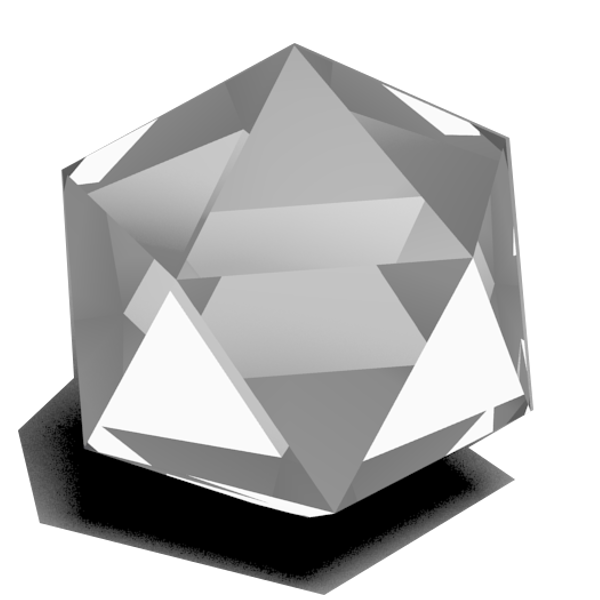Software

MOSFLM
Mosflm can process diffraction images from a wide range of detectors and produces, as output, an MTZ file of reflection indices with their intensities and standard deviations (and other parameters). This MTZ file is passed onto other programs of the CCP4 program suite (SORTMTZ, SCALA, TRUNCATE) for further data reduction.

nanoMAD
NanoMAD stands for Multiwavelength Anomalous Diffraction for Nano-structures: it is a command-line tool to analyze x-ray diffraction data collected at several wavelengths around one element's absorption edge, and extract the partial structure factor for the resonant atom.

NSXTool
NSXTool is an application for reducing neutron single crystal data. It provides algorithms for indexing, refining UB matrix and instrument parameters, integrating Bragg peaks for future analyses using software such as FullProf or ShelX. It is made of a core crystallographic library written in C++ (standard 2011) with dependencies on boost, eigen, gsl standard libraries and of a graphical user interface written in Qt.

Phenix
PHENIX is a software suite for automated macromolecular structure determination that can rapidly arrive at an initial partial model of a structure without significant human intervention, given moderate resolution and good quality data. This has been made possible by the development of novel algorithms for structure determination, maximum-likelihood molecular replacement (PHASER), heavy-atom search (HySS), template and pattern-based automated model-building (RESOLVE), automated macromolecular refinement (phenix.refine), and iterative model-building, density modification and refinement that can operate at moderate resolution (RESOLVE, AutoBuild). These algorithms are based on a set of crystallographic libraries that have been built and made available to the community.
PyNX
Python toolkit for accelerated Nano-structures Crystallography and Coherent X-ray Imaging techniques. The software included in this package can be used for: 1. the computing of X-ray scattering using graphical processing units 2. X-ray wavefield propagation (from near to far field) 3. simulation and GPU-accelerated analysis of experiments using the ptychography and coherent diffraction imaging techniques See the full documentation at: http://ftp.esrf.fr/pub/scisoft/PyNX/doc/

ROD
ROD is a program that can be used to do a refinement of a surface structure using surface X-ray diffraction data. All main features one encounters on surfaces, like roughness, relaxations, reconstructions and multiple domains, are taken into account. The most essential part of ROD is the calculation of the structure factor of the surface. ROD is complemented by two utilities: ANA and AVE: ANA can be used to integrate scans and to convert these into structure factors, while AVE can sort and average data, determine agreement factors and produce a data file for the program ROD.
SHARP/autoSHARP
SHARP is a computer program for macromolecular crystallography. It operates on reduced, merged and scaled data from SIR(AS), MIR(AS) and MAD experiments, refines the heavy-atom model, helps detect minor or disordered sites using likelihood-based residual maps, and calculates phase probability distributions for all reflections in the data set. autoSHARP is an automated structure solution system - from merged data to automatic model building (uses SHARP as phasing engine).

SHELX
SHELX is a set of programs for the determination of small (SM) and macromolecular (MM) crystal structures by single crystal X-ray and neutron diffraction. In the program suite: SHELXT extracts the Laue group, cell dimensions and types of element present , solves the structure using data expanded to space group P1, and then uses the P1 phases to find the space group. SHELXS solves small (up to about 100 unique non-hydrogen atom) structures by direct methods. it is based on the classical tangent formula of Karle and Hauptman, but uses phase annealing and includes information from the weak reflections via the negative quartets. etc. etc,-> refer to the SHELX home page
XDS
X-ray Detector Software for processing single-crystal monochromatic diffraction data recorded by the rotation method. It processes a sequence of adjacent, nonoverlapping rotation images collected from a single-crystal at a fixed X-ray wavelength and recorded by a variety of imaging plate, CCD, pixel and multiwire area detectors; allows arbitrary but fixed orientations of the detector and rotation axis, and only requires that incident beam and rotation axis intercept in one point in the center of the crystal; automatically derives reflecting range, spot width, crystal orientation, symmetry, and cell parameters from the data images. delivers a list of corrected integrated intensities of the reflections occuring in the data images.
XDSAPP
XDSAPP is a graphical user interface for the processing of diffraction data sets using XDS. It automates the data hadling and generates graphical plots of various data set statistics provided by XDS and other programs. By incorporating additional software, further information on certain features of the data set, such as radiation decay or the presence of pseudo-translational symmetry and/or twinning is provided. Intensity files suitable for CCP4, SHELX and CNS are automatically generated.
- ← Previous
- 1
- 2
- Next →

